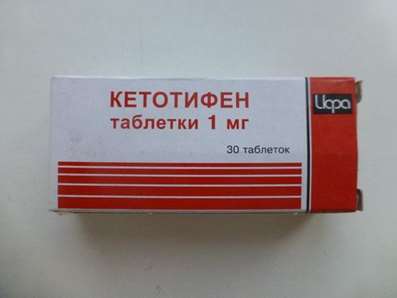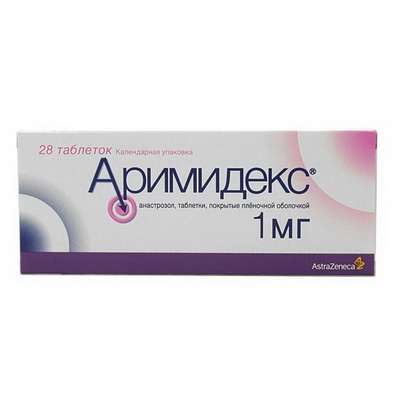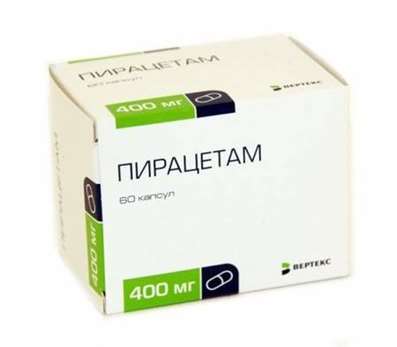Instruction for use: Cefecon D
I want this, give me price
Active substance Paracetamol
ņ“’ N02BE01 Paracetamol
Pharmacological group
Anilides
Nosological classification (ICD-10)
G43 Migraine
The pain of migraine, Migraine, hemiplegic migraine, Migraine headache, A migraine attack, Continuous headache, hemicranias
J06 Acute upper respiratory infections of multiple and unspecified
Frequent colds viral diseases, Infections of the upper respiratory tract, Acute respiratory disease influenza character, for colds Pain, Acute colds,Cold, respiratory infection,Seasonal colds, Pain in infectious and inflammatory diseases of the upper respiratory tract, Bacterial infections of the upper respiratory tract, Bacterial respiratory infections, Viral disease of the respiratory tract, Viral respiratory tract infections, Inflammatory disease of the upper respiratory tract, Inflammation of the upper respiratory tract disease, Inflammation of the upper respiratory tract illness with difficult sputum, Inflammatory airway disease, Secondary infections with colds, Shortness of sputum in acute and chronic respiratory diseases, Upper respiratory tract infection, Infections of the upper respiratory tract, Respiratory Tract Infections, Infections of the respiratory tract and lungs, Infectious-inflammatory diseases of the upper respiratory tract, Infectious-inflammatory diseases of the upper respiratory tract and ENT-organs, Infectious-inflammatory diseases of the upper respiratory tract in children and adults, Infectious-inflammatory diseases of the upper respiratory tract, Infectious inflammation of the airways,respiratory infection, Qatar upper respiratory tract, Catarrh of the upper respiratory tract, Catarrhal disease of the upper respiratory tract, Catarrhal symptoms of the upper respiratory tract, Coughing with a cold, SARS, ARI, ARI with rhinitis phenomena, Acute respiratory infection, Acute infectious and inflammatory disease of the upper respiratory tract, Acute respiratory disease, Sore throat or nose, Respiratory viral infections, Respiratory diseases, Respiratory infections, Recurrent respiratory infections, Secondary infection with influenza, cold in the chest, Feverish condition with flu usitis, acute sinusitis, genyantritis, purulent sinusitis
K08.8.0 * Painful toothache
Dentinal pain, Dentinal pains, Pain pulpitis, Anesthesia in dentistry, Pain syndromes in dental practice, Pain after removal of tartar, Pain when extracting a tooth, Toothache, Pain after dental interventions
M79.1 Myalgia
Myofascial pain syndromes ,Pain syndrome in musculo-articular diseases, Pain syndrome in chronic inflammatory diseases of the musculoskeletal system, Pain in the muscles, Tenderness of muscles, Muscular soreness in severe physical exertion, Painful conditions of the musculoskeletal system, Pain in the musculoskeletal system, Pain in the muscles, Pain at rest, Muscle aches, Muscle pain, Musculoskeletal pain, Myalgia, Muscle pain, Muscle pain at rest, Muscle pain, Muscular pain of non-rheumatic origin, Muscle pain of rheumatic origin, Acute muscle pain, Rheumatic pain, Rheumatic pains, Myofascial syndrome, Fibromyalgia
M79.2 Neurology and neuritis, unspecified
Pain syndrome with neuralgia, Brachialgia, Occipital and intercostal neuralgia, Neuralgia, Neuralgic pain, Neuralgia, Neuralgia of intercostal nerves,Neuralgia of the posterior tibial nerve, Neuritis, Neuritis traumatic, Neuritis, Neurological Pain Syndromes, Neurological contractures with spasms, Acute neuritis, Peripheral neuritis,Post-traumatic neuralgia,Severe pain of a neurogenic nature, Chronic neuritis, Essential neuralgia
R50 Fever of unknown origin
Malignant hyperthermia, Hyperthermia malignant
R51 Headache
Pain in the head, Cephalgia, Pain with sinusitis, Pain in the back of the head, Painful headache, Headache of vasomotor genesis, Headache of vasomotor origin, Headache with vasomotor disorders, Headache, Neurological headache, Serial headache
R52.0 Acute pain
Acute pain syndrome, Acute pain syndrome with osteoarthritis, Acute pain syndrome of traumatic origin, Severe pain of a neurogenic nature, Severe pain, Pain syndrome at delivery
T94.1 Consequences of injuries not specified by site
Conditions after injuries
T95.9 Consequences of unspecified thermal and chemical burns and frostbite
Composition and form of release
Suppositories rectal for children 1 supp.
paracetamol 0.05 g/ 0.1 g/ 0.25 g
auxiliary substances: vitessol - a sufficient amount to obtain a suppository with a mass of 1.25 g
in the planar cell pack 5 pcs .; in a pack of cardboard 2 packs.
Description of dosage form
Suppositories white or white with a cream or yellowish hue of color, torpedo-shaped.
pharmachologic effect
Pharmacological action - anti-inflammatory, antipyretic, analgesic.
Pharmacodynamics
Paracetamol has an analgesic and antipyretic effect. It blocks cyclooxygenase in the central nervous system, affecting the centers of pain and thermoregulation. In inflamed tissues, cellular peroxidases neutralize the effect of paracetamol on cyclooxygenase, which explains the absence of a significant anti-inflammatory effect.
The drug does not have a negative effect on water-salt metabolism (sodium and water retention) and gastrointestinal mucosa.
Pharmacokinetics
Absorption is high, rapidly absorbed from the digestive tract. The period of reaching Cmax is 30-60 min, binding to plasma proteins is 15%. Penetrates through the BBB. The magnitude of the distribution and bioavailability in children and newborns is similar to that in adults.
Metabolised in the liver: 80% - enters into the conjugation reaction with glucuronic acid and sulfates with the formation of inactive metabolites; 17% - undergoes hydroxylation with the formation of active metabolites, which are conjugated with glutathione and form inactive metabolites. With a lack of glutathione, these metabolites can block the enzyme systems of hepatocytes and cause their necrosis. In newborns of the first two days of life and in children 3-10 years, the main metabolite of paracetamol is paracetamol sulfate, in children 12 years and older - conjugated glucuronide.
T1 / 2 2-3 hours. Within 24 hours, 85-88% of paracetamol is excreted by the kidneys in the form of glucuronides and sulfates, unchanged - 3%. There is no significant age difference in the rate of elimination of paracetamol and in the total amount of the drug that is excreted in the urine.
indications
Applied in children from 3 months to 12 years as:
antipyretic agents in acute respiratory infections, influenza, childhood infections, postvaccinal reactions and other conditions accompanied by fever;
painkiller with pain syndrome of mild to moderate intensity, incl. headache and toothache, muscle pain, neuralgia, pain with injuries and burns.
Children from 1 to 3 months may receive a single dose to lower the temperature after vaccination.
Contraindications
hypersensitivity to the components of the drug;
age up to 1 month of life.
Carefully:
violations of the liver and kidneys;
Gilbert's syndrome; Dubin-Johnson and Rotor;
diseases of the blood system (anemia, thrombocytopenia, leukopenia);
genetic absence of the enzyme glucose-6-phosphate dehydrogenase.
Side effects
On the part of the intestine: nausea, vomiting, abdominal pain.
Allergic reactions: itching, rashes on the skin and mucous membranes, urticaria, angioedema.
On the part of the organs of hematopoiesis: anemia, leukopenia, agranulocytosis, thrombocytopenia.
With prolonged use in large doses, hepatotoxic and nephrotoxic action (interstitial nephritis, papillary necrosis), hemolytic anemia.
Interaction
Stimulants of microsomal oxidation in the liver (phenytoin, ethanol, barbiturates, flumecinol, rifampicin, phenylbutazone, tricyclic antidepressants), hepatotoxic drugs increase the production of hydroxylated active metabolites, which makes it possible to develop severe intoxication even with a slight overdose.
Inhibitors of microsomal oxidation (including cimetidine) reduce the risk of hepatotoxic effects.
When taken together with salicylates, the nephrotoxic effect of paracetamol increases dramatically.
The combination with chloramphenicol leads to an increase in the toxic properties of the latter.
Strengthens the effect of anticoagulants of indirect action, reduces the effectiveness of uricosuric drugs.
Dosing and Administration
Rectal, after cleansing enema or spontaneous emptying of the intestine. The dosage of the drug is calculated according to age and body weight, according to the table. A single dose of 10-15 mg / kg 2-3 times a day after 4-6 hours, the maximum daily dose of paracetamol should not exceed 60 mg / kg.
special instructions
If the fever lasts more than 3 days and the pain syndrome is more than 5 days, you should consult your doctor.
Paracetamol should not be used concomitantly with other paracetamol-containing drugs, as this can cause an overdose of paracetamol.
When using the drug for more than 5-7 days, it is necessary to monitor the peripheral blood and the functional state of the liver. Paracetamol distorts the results of laboratory studies in the quantitative determination of glucose and uric acid in plasma.
Storage conditions
In a dry place, at a temperature not exceeding 20 į C.
Keep out of the reach of children.
Shelf life
3 years.
Do not use after the expiry date printed on the package.

 Cart
Cart





